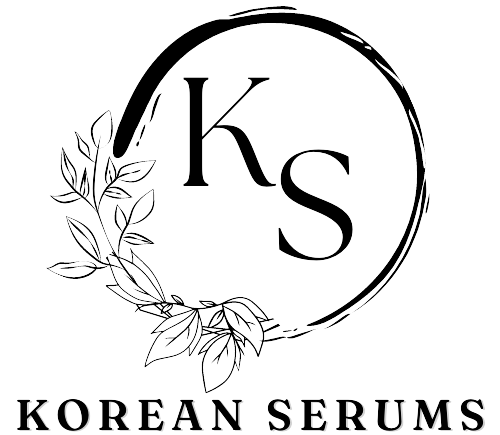In the ever-evolving world of skincare, two ingredients have emerged as standout stars: hyaluronic acid and niacinamide. Let understand hyaluronic acid vs niacinamide in further article.
But do you know which one is right for your skin type? Understanding the specific benefits that each ingredient offers helps customize skincare routines and achieve optimal results.
Each ingredient plays its unique role in addressing various skin conditions and enhancing overall skin health.
This article will explore the differences in benefits of hyaluronic acid and niacinamide for various skin types, while also addressing counterarguments and criticisms.
By the end, you’ll have a clearer understanding of these popular skincare ingredients and how to harness their potential for your unique skin.
Hyaluronic Acid vs. Niacinamide: Key Differences
| Criteria | Hyaluronic Acid | Niacinamide (Vitamin B3) | Winner? |
|---|---|---|---|
| Primary Benefit | Deep hydration (holds 1000x its weight in water) | Strengthens skin barrier, regulates oil | Depends on need |
| Best For Skin Types | Dry, Dehydrated, Sensitive | Oily, Acne-Prone, Combination | – |
| Texture | Lightweight, serum-like | Lightweight, easily layered | Tie |
| Key Advantages | – Plumps skin – Reduces fine lines – Safe for sensitive skin |
– Controls sebum – Reduces redness – Brightens tone |
– |
| Potential Drawbacks | Can feel sticky if overapplied | May cause flushing in high concentrations | – |
| Works Best With | Apply to damp skin, layer under moisturizer | Use after cleansing, before thick creams | – |
| Time to See Results | Instant hydration | 2-4 weeks for oil control/even tone | – |
| Ideal Concentration | 0.2%-2% | 2%-5% | – |
| Night or Day? | Both (AM: under sunscreen; PM: before cream) | Both (AM: oil control; PM: repair) | – |
| Can They Be Used Together? | YES! Layer HA first, then niacinamide for combo benefits | Power duo |
Skin-Type-Specific Recommendations
| Skin Type | Best Ingredient | Why? | Product Tip |
|---|---|---|---|
| Oily | Niacinamide | Regulates sebum, minimizes pores | Try *The Ordinary Niacinamide 10% + Zinc* |
| Dry | Hyaluronic Acid | Replenishes moisture, prevents flakiness | COSRX Hyaluronic Acid Hydra Power Essence |
| Combination | Both (Layer HA → Niacinamide) | Hydrates dry zones + controls T-zone oil | Use Hada Labo Gokujyun Lotion followed by Glossier Super Pure |
| Sensitive | Hyaluronic Acid (low-risk) | Soothes without irritation; test niacinamide at 2% first | Vichy Mineral 89 (fragrance-free) |
Common Myths Debunked
(Addressing Your “Counterarguments” Section)
| Myth | Reality |
|---|---|
| “Niacinamide causes breakouts” | Only if mixed with incompatible actives (e.g., vitamin C at low pH). Safe for acne-prone skin at ≤5%. |
| “HA dries out skin in dry climates” | Partially true. Always seal with moisturizer to prevent moisture loss. |
| “You must choose one over the other” | False! They complement each other (HA hydrates, niacinamide repairs). |
Understanding Skin Types
1.1 Oily Skin
Oily skin is characterized by excess sebum production, leading to a shiny appearance, enlarged pores, and often, breakouts.
People with oily skin may feel that they have ample moisture but frequently struggle with hydration and acne at the same time. This is where hyaluronic acid and niacinamide can come into play.
1.2 Dry Skin
Dry skin feels tight, rough, and can often display flakes. Lack of moisture leads to discomfort and sometimes redness. For those with dry skin, finding a suitable product can significantly impact comfort and appearance.
Hyaluronic acid is particularly appealing because it can deeply hydrate the skin, making it feel smoother and more rejuvenated.
1.3 Combination Skin
Combination skin features both dry and oily areas, often creating a unique challenge for skincare routines. Those with varied skin types might find their T-zone oily while their cheeks may feel parched.
A tailored approach is crucial, allowing individuals to select products that cater to both oily and dry patches appropriately.
1.4 Sensitive Skin
Sensitive skin tends to react to environmental changes, skincare products, or dietary factors. Issues such as redness, burning sensations, and swelling can arise, particularly after using harsh products.
Selecting gentle, non-irritating ingredients, like hyaluronic acid and niacinamide, can help soothe sensitive skin while providing necessary hydration and support.
Section 2: The Benefits of Hyaluronic Acid
2.1 Hydration for All Skin Types
Hyaluronic acid is a humectant, meaning it attracts moisture from the environment into the skin. This ability makes it beneficial for all skin types, whether oily, dry, combination, or sensitive. Its lightweight texture makes it easy to layer under other products, providing a hydration boost without feeling heavy.
2.2 Particularly Beneficial for Dry and Dehydrated Skin
For those with dry skin, hyaluronic acid works wonders. It can hold up to 1,000 times its weight in water, providing intense hydration. When applied, it helps in replenishing moisture levels in the outer layer of the skin, making it look plumper and healthier.
2.3 Acne-Prone Skin Benefits
Interestingly, hyaluronic acid can also alleviate issues for those with acne-prone skin. By keeping the skin hydrated, it can minimize sebum overproduction, which often leads to breakouts. Additionally, it helps reduce the appearance of acne scars and may improve overall skin quality over time.
Section 3: The Benefits of Niacinamide
3.1 Strengthening the Skin Barrier
Niacinamide, also known as Vitamin B3, is renowned for enhancing the skin’s barrier function. A robust skin barrier assists in keeping moisture in and harmful irritants out. This property is crucial for all skin types, but especially for those with dry or sensitive skin.
3.2 Anti-Inflammatory Properties
Another significant advantage of niacinamide is its anti-inflammatory properties. It can help soothe redness and irritation, making it particularly beneficial for sensitive or acne-prone skin. Users often report diminished redness and a more even complexion after including niacinamide in their skincare regimen.
3.3 Benefits for Oily and Combination Skin
For those with oily or combination skin, niacinamide can be a game-changer. It effectively regulates oil production, leading to fewer breakouts and a more balanced look. Besides addressing oiliness, it enhances skin tone, giving the skin a brighter and clearer appearance.
Section 4: Comparative Analysis: When to Choose Which
4.1 Oily Skin Recommendations
For individuals with oily skin, niacinamide is often preferable as it helps regulate excess sebum. Incorporating a serum containing niacinamide can lead to a less shiny appearance while improving overall skin texture.
4.2 Dry Skin Recommendations
Conversely, those with dry skin should prioritize products containing hyaluronic acid. Using a rich moisturizer with hyaluronic acid can deeply soothe and nourish, leaving the skin feeling hydrated and comfortable.
Read related : Is Hyaluronic Acid Good for Oily Skin?- Benefits, Uses & side effects!
4.3 Combination and Sensitive Skin
People with combination or sensitive skin may benefit from using both ingredients. First, apply hyaluronic acid for hydration, followed by niacinamide to enhance the skin barrier and reduce redness. This combination can help target individual areas of concern effectively.
Section 5: Counterarguments and Criticism
5.1 Concerns About Efficacy
Some skeptics argue about the actual efficacy of hyaluronic acid and niacinamide. Critics often claim that the results may depend on the product formulation and concentration of the active ingredients, thus leading to varied personal experiences.
5.2 Potential Irritations
While both ingredients are generally well-tolerated, it’s essential to recognize that sensitive skin can react negatively, particularly if irritation occurs. Always conducting a patch test before full application is vital to understanding how your skin responds.
5.3 Overhyped Benefits
There are claims that the benefits of hyaluronic acid and niacinamide may be exaggerated by marketers. While many users experience positive changes, it’s crucial to approach skincare with realistic expectations tailored to individual needs.
Section 6: Reaffirming the Argument
6.1 Overall Benefits Based on Skin Type
Ultimately, the choice between hyaluronic acid and niacinamide can significantly impact skin health and appearance. By understanding each ingredient’s benefits, those who know their skin type can make informed decisions.
6.2 Customizing Use for Optimal Results
Customizing your skincare routine based on skin type is crucial. Understanding how hyaluronic acid provides intense hydration while niacinamide offers barrier support and oil management creates immense potential for achieving healthy skin.
6.3 Encouraging Combination Use
Many users find that incorporating both hyaluronic acid and niacinamide into their routines yields the best results. These two ingredients work harmoniously, creating a balanced skincare regimen capable of addressing multiple concerns.
Conclusion
(From Your “Combination Use” Section)
-
Order Matters: Apply hyaluronic acid first (on damp skin), then niacinamide.
-
AM/PM Split: Use HA in AM under sunscreen; niacinamide at night for repair.
-
Patch Test: Especially for sensitive skin—try niacinamide at 2% first.
Recapping the entire discussion, understanding individual skin needs is essential when choosing between hyaluronic acid and niacinamide. While both ingredients offer distinctive benefits, personalizing their use according to skin type will lead to the best outcomes. So don’t hesitate to experiment and discover the best formulations for your unique skincare goals! Your radiant skin awaits—unlock its full potential today!
Make sure to explore various product formulations, check ingredient lists, and find what works best for your skin type. Consult a skincare professional if you have persistent issues, and have fun exploring the world of radiant skin!
Read related : Is niacinamide good for oily skin?- Oil Control Miracle! (2024)







